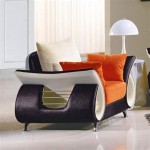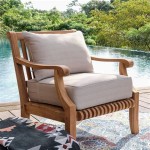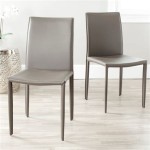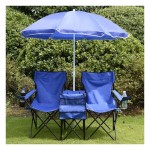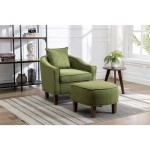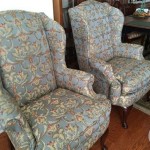Underwater Pool Table and Chairs: A Novel Concept in Aquatic Leisure
The notion of an underwater pool table and chairs represents a fascinating intersection of recreational activities and innovative engineering. This unique concept takes the popular game of pool and transforms it into an experience within the aquatic environment. The design and implementation of such a system require careful consideration of materials, buoyancy, stability, and the overall user experience. While not widely available commercially, the conceptual exploration of this idea highlights the potential for novel aquatic amusements.
The potential appeal of an underwater pool table lies in its novelty and the altered dynamics of the game. The buoyancy of the water introduces a new dimension of challenge and interaction. Players would need to adapt their strategies to account for the resistance and support provided by the water, making each shot a more calculated effort. This article will explore the key considerations involved in designing and potentially constructing such a system, focusing on the materials needed, the anticipated challenges, and the potential benefits and drawbacks of this unusual leisure activity.
Material Selection and Design Considerations
The fundamental aspect of creating an underwater pool table and chairs is selecting the appropriate materials. These materials must be waterproof, resistant to corrosion, and capable of withstanding the pressure exerted by the water. Common materials used in underwater construction and marine applications offer a starting point for consideration. Furthermore, the design must address the specific challenges posed by the underwater environment, such as visibility, accessibility, and the potential for algae growth.
Acrylonitrile Butadiene Styrene (ABS) plastic is a strong contender for the primary structural components due to its inherent water resistance and durability. When properly sealed, ABS offers excellent protection against water damage and remains impervious to corrosion from pool chemicals. The thickness of the ABS sheets used for constructing the table frame and chair supports would need careful calculation to ensure structural integrity under the water pressure. The pool table surface, typically constructed from slate in traditional tables, would need to be replaced with a similarly flat and durable material. A high-density polyethylene (HDPE) might provide similar qualities of leveled and smooth surface. These sheets can be machined to achieve the required flatness and then sealed to prevent water intrusion.
The legs of the table and chairs would need to be weighted to counteract buoyancy. This could be achieved by incorporating a ballast system within the legs, using materials like lead or concrete. Encapsulating the ballast within a waterproof housing is crucial to prevent contamination of the pool water. Alternatively, the legs could be designed with a wider footprint to increase stability and reduce the tendency to float.
The playing surface itself would require special consideration. Traditional billiard felt, while providing a smooth playing surface, is unsuitable for underwater use. Instead, a synthetic rubber or silicone material could be considered. These materials are waterproof, durable, and can be textured to provide a degree of grip for the billiard balls. However, achieving the same level of smoothness as billiard felt could be challenging, potentially affecting gameplay.
The pockets of the pool table would require a mesh or net construction to trap the billiard balls once pocketed. These nets would also need to be made from a waterproof and durable material, such as nylon or polyester. The design would need to allow for easy retrieval of the balls while preventing them from floating away.
The chairs themselves must be ergonomically designed for comfortable underwater seating. Adjustable height features might also be considered to accommodate different player heights and preferences. The chair's seat and back could be made from a perforated ABS or HDPE material to allow for water flow and reduce buoyancy. The chair legs would need to be similarly weighted and designed for stability, preventing the chair from tipping over during gameplay.
Visibility underwater is a critical factor. The materials used should be chosen to minimize glare and reflection. Coating surfaces with a matte finish could help reduce these effects. Additional lighting, such as underwater LED lights, could be incorporated into the table and chairs to improve visibility, particularly in dimly lit pools. The table and chair designs should also avoid sharp edges or protrusions that could pose a safety hazard to players.
Challenges in Underwater Pool Table Operation
Operating an underwater pool table presents several unique challenges that do not exist in traditional pool. These challenges relate to ball behavior, cue stick manipulation, and overall player comfort and accessibility. Overcoming these obstacles requires a re-evaluation of the rules and equipment used in the game.
The billiard balls themselves would need to be specifically designed for underwater use. Traditional billiard balls are made of phenolic resin, which is dense enough to sink in water. However, the buoyancy of the water would affect the ball's trajectory and speed. Heavier balls might be more resistant to the buoyant force, but they could also be more difficult to control. Experimentation with different ball densities and sizes would be necessary to find the optimal balance between control and stability.
The cue stick would also require modification. A standard wooden cue stick would quickly become waterlogged and unusable. Instead, a sealed, composite cue stick made from materials like carbon fiber or fiberglass would be necessary. The cue tip, normally made of leather, would need to be replaced with a synthetic material that maintains its grip underwater. The cue stick could also be designed with a weighted handle to improve balance and control.
The buoyancy of the water would significantly alter the way players aim and strike the balls. The water resistance would slow down the ball's speed, making it more difficult to achieve long-distance shots. The buoyant force would also affect the ball's trajectory, causing it to rise slightly as it travels through the water. Players would need to compensate for these effects by adjusting their aim and stroke power.
Communicating underwater would also be a challenge. Verbal communication would be limited, requiring players to rely on hand signals or pre-arranged gestures. A waterproof communication system, such as underwater microphones and speakers, could be considered, but this would add complexity and cost to the setup.
Maintaining the pool water quality is also essential. The materials used in the table and chairs should be non-toxic and resistant to algae growth. Regular cleaning and disinfection of the pool water would be necessary to prevent the buildup of bacteria and other contaminants. Proper filtration and circulation are also crucial for maintaining water clarity and preventing stagnation.
Accessibility for all players is a crucial design consideration. The depth of the pool table should be appropriate for players of different heights and abilities. Ramps or steps could be provided to allow easier access to the pool. Adaptive equipment, such as modified cue sticks or assistive seating devices, could be offered to accommodate players with physical limitations.
Potential Benefits and Drawbacks
The concept of an underwater pool table presents both potential benefits and drawbacks. The novelty of the experience and the unique challenges it offers could attract a niche market of recreational enthusiasts. However, the complexity of the design, the high cost of materials and construction, and the potential safety concerns may limit its widespread adoption.
One potential benefit is the novelty factor. Playing pool underwater would be a unique and memorable experience, potentially attracting individuals seeking novel or unusual recreational activities. The altered dynamics of the game could also provide a fresh perspective on a familiar pastime, challenging players to adapt their skills and strategies. This could be a major draw for experienced pool players looking for a new twist on the game.
Another potential benefit is the therapeutic aspect of water immersion. Water can provide a soothing and relaxing environment, reducing stress and promoting physical well-being. The buoyancy of the water can also reduce the strain on joints and muscles, making it an ideal activity for individuals with arthritis or other mobility issues. Playing pool underwater could therefore combine the mental stimulation of a strategic game with the physical benefits of aquatic exercise. A further advantage of utilizing water immersion is the reduction of impact injuries, making this form of recreation more accessible for some individuals.
However, there are also several significant drawbacks to consider. The cost of materials and construction would likely be substantial. The specialized materials required to withstand the underwater environment, as well as the complex engineering and design considerations, would contribute to a high price tag. This could make the concept financially impractical for many individuals and businesses.
Safety is another major concern. The underwater environment poses inherent risks, such as the potential for drowning or injury. Close supervision would be necessary to ensure the safety of players, particularly those who are not strong swimmers. The table and chairs would need to be carefully designed to avoid sharp edges or protrusions that could cause injury. Regular maintenance and inspection would also be essential to identify and address any potential safety hazards. The potential risks associated with electrical components, such as underwater lights, also need to be carefully mitigated.
Maintenance and cleaning are added considerations. The underwater environment is conducive to algae growth and the accumulation of debris. Regular cleaning and disinfection of the table, chairs, and pool water would be necessary to maintain hygiene and prevent the spread of disease. This could be a time-consuming and labor-intensive task. The materials used in the construction of the table and chairs would also need to be carefully chosen to resist corrosion and degradation from pool chemicals.

Relaxation Station Swimming Pool Table And Stools

In Pool Amenities Dipping Into Something Special Haven Pools

Swimming Pool Patio Table Set The Green Head

In Pool Furniture Tables Seating S R Smith

Relaxation Station Swimming Pool Stools

Destination Series Pool Tables Seating

Creative Underwater Pool Seating Ideas Escape Pools Tx

Creative Underwater Pool Seating Ideas Escape Pools Tx

In Pool Tables Stools Benches Design Options For Swim Up Dining

Destination Series Pool Tables Seating
